
Edition 195 - December 2021

Artwork: Debbie Rigler Cook
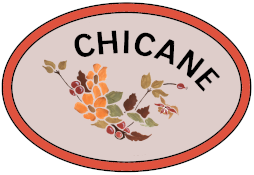
EDITORIAL
As I write this the sun is actually shining and although the evenings have drawn in and there is more of a chill in the air, the trees and hedgerows are still looking stunning in their bright, autumnal colours, and roses and other plants continue to bloom to cheer us up!
There has been movement in the village; we have said both goodbye and hello and we extend a warm welcome to all newcomers and a sad farewell to those who've left us. Good luck and happiness in your new homes.
Sadly, we are minus a missive from our nonagenarian, Tony B, who has not been well. We hope that he and all others, especially those who have succumbed to the virus, will be feeling fit and well again soon.
Steve, our Rural Reflector, received congratulations from the Exmoor Magazine, who also gave a nice plug to our Newsletter in their Winter edition. Thank you.
And big thanks must go - to Barbara for her kind donation from the collection made in memory of Alan; to the very many generous donations and Christmas messages, which will benefit both the Manor Hall and the Newsletter to the tune of £150 plus; to James and Harry for their continuing work on the website. When you are next sitting down with a coffee, take a look, those who have done so already have been agreeably surprised!
A final thank you must go to everyone who has contributed in any way to this, another bumper edition. Why don't you make it a new year resolution to contribute to the February one? Items for that are needed as soon as possible and by the deadline of Friday, 14th January, 2022.
... and now to Christmas! I wish you all a Very Happy Christmas and a Healthy and Peaceful New Year. Stay safe.
Judie - Ed
1
PRESS RELEASE!
After some thirty-two years, typing and producing the village Newsletter, I think the time has come to hang up my keyboard, the plan being that edition 200 [a nice round number!], October 2022, will be my last.
It has been an interesting and enjoyable journey, going from a typewriter, stencils and inky duplicator, to today's technology. But none of this would have been possible without the incredible and wonderful support of the many contributors, especially the regular writers and the artists, and all those who have supported it financially. A very big Thank You!
If there is anyone interested and willing to take the Newsletter on - and I hope there is - please do let me know. I should be very happy to give whatever help I can. Should it be that there is a surplus of funds at the time, they would, of course, be donated to any new publication and other village groups.
Currently a lot of hard work is taking place on the website, so that all 200 editions will be online for future generations to explore, research and enjoy.
Thank YOU for being a Reader!
Judie
2

3

ST PETER'S CHURCH
As mentioned in the last edition of the Newsletter, we have prepared our Parish Profile alongside the Parish Profiles of Combe Martin and Pip & Jim's churches, and have already submitted our advertising campaign to attract candidates for interview. The good news is such that the short listing for a new Rector took place on 16th November, with an interview date set for 1st December. It is hoped that the appointment of the successful candidate will take up his/her position in the Benefice around Eastertime.
A joint service was enjoyed by all 3 churches at St. Peter's ad Vincula, Combe Martin, on Sunday 31st October. The Combined Music Group led the singing with the accompaniment of guitars, piano and clarinet, and Stuart opened and closed the service with hymns played on the pipe organ.
Berrynarbor Church Services are advertised on the notice boards by the Lych Gate and also in the Church Porch and top churchyard gate. Whilst we strive to have 4 services each month, it is occasionally proving difficult to have a Vicar or Lay Readers to take all services. So it is important to read these notices in advance to avoid unnecessary journeys to our beautiful church - when only 3 services are held in the month.
At this moment we are not sure which clergy will take our Christmas Services, but a new Carols for Christmas will take place on Sunday 19th December at 11.00 a.m. in place of our usual Christmas Carol Service. We look forward to a really good attendance to celebrate the birth of our Saviour, Jesus Christ.
Our Harvest Festival Service on Sunday 10th October was held with thanks to our ladies for providing excellent refreshments following the service. Our Annual Harvest Supper Evening in the Manor Hall was cancelled this year in view of the difficulties presented by the current Covid situation.
We must, however, convey our sincere thanks to all those who contributed tins and packets of food to our collection point adjacent to the Church Font, and also to the Village Community Shop where their Food Basket was filled to capacity with produce for the Ilfracombe Food Bank. Many thanks again to those good people who contributed so generously to help those who are in need.
We still need someone to volunteer for the position of PCC Secretary so please contact us on 883893 if you are able to offer your services. Please remember that we meet only 6 times in a year - so it's not a difficult task!
We continue to pray at this time for all those who are sick, awaiting operations or awaiting hospital treatment.
We send our best wishes to everyone in Berrynarbor for a Happy Christmas and hope that the New Year will bring back a healthier life for all.
Sue Neale
4
OUR MOBILE LIBRARY
Please Note: The Mobile Library's last visit before Christmas and the New Year was on the 30th November. The next visit will be on Tuesday, 11th January 2022, and then 4-weekly.
From the new year the times will be changing slightly, just a bit later. It will be at the Village Shop from 11.55 a.m. to 12.20 p.m., and the Sterridge Valley from 12.35 to 1.00 p.m.
5
Our VILLAGE defibrillator
Due to this pandemic, Geoff and I have stayed in the U.K, but when we've been allowed to travel, we have. Our travels have meant that we have spotted numerous defibrillators locally and further afield, such as Sussex, Suffolk, Norfolk, Yorkshire, Cheshire and Cumbria, to name a few. Ours, opposite the school, is still in a red telephone box. All the others were in very obvious yellow so that everybody, residents and visitors, could see, easily, where this life-saving equipment is situated. Some villages included signage too, as to its location. Should we not follow this protocol?
If so, perhaps this is a job that should be left until the spring, when we hope it will be drier than it is currently!
I'm very willing to pick up a paint brush; knowing the readiness of village volunteers, I'm sure I wouldn't be on my own! Could this be a 2022 project?
Judith Adam
6

7

WEATHER
OR NOT
September
and October
Since my last weather report, I have had an enjoyable holiday in the Isles of Scilly for ten days with very good weather, the only poor day was the day I crossed over to the islands in one of the thickest fogs I have seen for a long time.
I'll start by looking at the 1st of September. The morning was dull with total cloud cover and a slight hint of rain, the overnight temperature fell to 13.5˚C and climbed to 17.1˚C by 1500hrs. The wind was from the NNW and reached a maximum of 19 mph at 1400hrs. There was no recordable rainfall. The barometer reached a high of 1031.6mbars at 1030 hrs and then started to fall until 2000hrs by which time it was 1029.1mbars, before rising again to 1029.7mbars by 2359hrs. Then it started to fall again. The sun managed to shine for a very poor 1.04 hours.
Moving on to the rest of September, the highest temperature was on the 7th at 30.3˚C [average 24.03˚C] with the lowest on the 29th at 7.8˚C [average 6.68˚C]. The highest wind speed was on the 30th at 36.0 mph [average 29.84 mph] from the south. The wind chill lowest temperature was 7.9˚C on the 29th [average 6.48˚C]. The wettest day was on the 27th with 21.0mm. Total rainfall for the month was 62.6mm [average 98.52mm], and the total for the year so far 717.6mm. The highest barometer reading was on the 21st at 1031.8mbars and lowest on the 27th at 1000.5mbars. The sunniest day was the 4th with 6.74 hours and total for the month 111.06 hours [average 122.8hours]. Humidity reached a high of 96% at 0830hrs on the 24th and a low of 51% at 16:30 hrs on the 7th.
The 1st of October started with 7/8th cloud cover and heavy showers, with total rain for the day of 6.6mm. During the night the temperature was highest at 0100hrs at 15.1˚C and managed to slowly drop through the day and by 2300hrs was only 9.0˚C. The top gust of wind was 27mph. at 0600hrs from the SSW. The barometer reached 1011.8mbars by 1930hrs before starting to fall. The sun managed to shine for 3.92 hrs.
Looking at the temperatures for October the warmest day was the 8th with a high of 20.6˚C [average 19.73˚C] and the coolest on the 11th at 6.0˚C [average 3.13˚C]. The maximum wind gust was 39mph on the 31st from the SW [average 36.94mph]. The wind chill factor was lowest on the 11th at 5.6˚C. The wettest day was the 28th with 22.2mm in the gauge, the total for the month was 140.0mm [average 28th 159.71mm]. The total for the year up to the end of the month was 857.6mm. The barometer has been quite lively ranging from a low of 987.3mbars at 1600hrs on the 2nd to a high of 1033.2mbars on the 11th. Sunshine was in short supply with the best day on the 17th with 4.35hrs. and a total of 53.26hrs for the month [average 63.52hrs]. The humidity varied from a high of 95% on the 10th, 13th and 16th, to a low of 70% on the 1st and 22nd.
Looking back over the two months, the temperatures were higher than average. Rainfall was lower than the averages and the total rain for the year is well down on this time last year's figure of 1079.4mm. Is this a sign of Global Warming, a hot topic with the Glasgow COP26 summit taking place? I wonder how much good will come out of it with so many participants trying to agree.
My next article will be after Christmas and the New Year. My best wishes for the festive season, take care and I hope 2022 brings better times for all of us.

Bishop Rock Light House - Isles of Scilly
Did you know that the rock holds the record as the smallest island in the world to be built on? The upgraded structure you see today was completed in 1887 and stands 49 metres tall. It was fully automated in 1992. I believe the helipad was fitted in 1976.
Simon
8

9
THANK YOU
Thank you all for the donations for Alan's bench which is now in place next to the telephone box and was very nicely made locally, with wood kindly donated by John and Fenella, and a big thank you to Paul for arranging the collection of the money for me, which amounted to nearly £2,000.
I had funds left over, so I have given donations to the things Alan loved in the village - Berrynarbor Newsletter, Berry in Bloom, the Manor Hall and Berrynarbor Horticultural and Craft Society.
Many thanks.
Barbara
One of the very many things Alan did for the village, was to bring the telephone box from Berry Down, and refurbish it ready to be today's information centre.

10
THE TRUMPS OF MIDDLE COCKHILL
Exploring the history of Berrynarbor School set me thinking about the schoolboys who would have grown up to fight in the First World War. In the church porch hang two Rolls of Honour: one listing men of the village who signed up in September 1914 and the other, those serving in November 1917. On the War Memorial in the churchyard, there are eight names: Albert Trump, Arthur J Snell MM, Albert Latham, Samuel Trump, William Huxtable, Sydney W Toms, Albert J Snell, Herbert Richards.
In this article I should like to tell you about Albert Trump [1888 - 1916], Samuel Trump [1895 - 1917] and their family.


George Trump and Sarah Beer came respectively from Marwood and Atherington; they married in 1872 and went on to have at least six children. The family moved to Berrynarbor in 1905 when they took up the tenancy of Middle Cockhill in the Sterridge Valley. This was a smallholding of just over 13 acres when it was sold by the Watermouth estate in 1920.
Some of the older Trump children had already left home by 1905, but Thomas, Albert, Lily, George and Samuel probably all came to live in Berrynarbor. Only the two youngest children attended the school, eleven-year-old George junior and nine-year-old Samuel; they were both admitted on 3rd April - shortly after Lady Day when tenancies traditionally changed hands. By the time of the 1911 Census, Thomas was a domestic gardener living with his wife and three young children at Rectory Cottage [Wild Violets]. The four younger siblings still lived at Middle Cockhill: Albert was a traction driver, Lily and Samuel's occupations are not listed and George is described as working on his family's farm.
Both Albert and George Trump appear in the Berrynarbor Roll of Honour dated 19th September 1914. Albert joined the 6th Battalion of the Devonshire Regiment; he was 26 years old and had been married for a little over a year. George joined the Military Police; he was 22 years old. In May 1916 conscription was extended to include married men and shortly afterwards Thomas joined the Devonshire Light Infantry.
In the summer of 1916, George Trump Senior appealed to the Military Tribunal on behalf of his youngest son Samuel, on the grounds that he was needed on the family farm; his appeal was initially upheld but later overturned. The case is reported in the North Devon Journal and George Trump made the point that the family already had three serving sons. Samuel joined the 9th Battalion of the Devonshire Regiment in 1916 when he was 21 years old.
Lily probably lived with her parents throughout the war and did not marry until late in 1918, when she was about 28 years old. She married Henry Piper from Combe Martin and we might imagine that the couple waited until after the war was over to marry. Like George Trump Senior, Henry's father had also tried to keep him at home, appealing that he was an essential worker on their family farm but, like Samuel Trump, he too was ordered to the Front in 1916.
Brothers Albert, George and Samuel are named in the Berrynarbor Roll of Honour dated 15th November 1917. This Roll gives an address for each man so that letters and provisions could be sent. Albert's address is British POW, Tarsus, Turkey; George's as France and Samuel's as PLY 2001 2nd Bat. RMLI. This is particularly poignant because Albert and Samuel were already dead by this time. Albert died serving in Turkey on 30th November 1916 and is commemorated at the Baghdad North Gate War Cemetery. Samuel was killed on 26th October 1917 in either France or Flanders and is commemorated on the Tyne Cot Memorial in Belgium. It is impossible for most of us to imagine the suffering of those at home who had waited so long for news of their loved ones.
George Trump survived the war and moved to south Devon where he married in 1922 and went on to have a family. By 1939 he was a police constable living in Sidmouth. Thomas Trump also survived and the electoral roll shows that he initially returned to Berrynarbor, although in around 1920 he and his family moved to Ilfracombe. After their marriage, Lily and Henry Piper lived at Beara Farm in Buzzacott Lane, Combe Martin.
Tanya Walls
11

PRIMARY SCHOOL UPDATE
Here, at school, we have continued to crack on with our varied curriculum - we have galloped across a wide variety of subjects this half term. We are really pleased to say it has been a joy to be able to host some of our usual events in the last term. Just before the October half term, we held our Annual Harvest Festival Service in the playground. It was lovely to see the children join together. We collected a generous pile of store-cupboard food for the local foodbank. Thank you to our parent community for the generous donations.
 Armistice
Day was marked poignantly this year by the children of Mulberry and Aspen Class
[Reception, Year One and Year Two]. The children took time to research names of
those fallen armed forces personnel from Berrynarbor and wrote individual
thankyous to them all. You may have seen these on the lichgate to the church,
marked also by the handmade poppies donated by our local community. It was a
beautiful display of respect for those who gave their lives for our freedom. Some
of our older children in Pine Class made their own reusable poppies and have
raised money for the Royal British Legion by selling them to friends and
family. We have heard we were also lucky to have had two of our Year 6
children attend the Remembrance Service in the village. The girls took
responsibility for laying a wreath. Thank you to Brooke Bacon and Emily
Stanbury - good work girls.
Armistice
Day was marked poignantly this year by the children of Mulberry and Aspen Class
[Reception, Year One and Year Two]. The children took time to research names of
those fallen armed forces personnel from Berrynarbor and wrote individual
thankyous to them all. You may have seen these on the lichgate to the church,
marked also by the handmade poppies donated by our local community. It was a
beautiful display of respect for those who gave their lives for our freedom. Some
of our older children in Pine Class made their own reusable poppies and have
raised money for the Royal British Legion by selling them to friends and
family. We have heard we were also lucky to have had two of our Year 6
children attend the Remembrance Service in the village. The girls took
responsibility for laying a wreath. Thank you to Brooke Bacon and Emily
Stanbury - good work girls.
We have seen the return to Ilfracombe swimming pool for our course of lessons for Pine and Alder Class. Despite many children not able to attend lessons over the last 18 months, they have adapted well to the pool environment once again and made us proud with their efforts in the water.
We shall be performing our Walking Nativity around the village on Thursday, 2nd December, starting from the playing field at 5.30 p.m. and ending in the centre of the village. This has been a fixture in our calendar for the last couple of years. It will be great to be out and about in the village once again - seeing and hearing the Christmas story, singing carols and performing as a community. We have enjoyed learning carols and performing once again.
Towards the end of this half term sees our Christmas Dinner and Jumper Day. Looking forward to seeing all the cheerful Christmas themed clothing on display! Christingle will see the final event in our Christmas calendar - how wonderful it will be to gather in church for this special event. Greatly anticipated due to last year's cancellation.
We are all looking forward to a break over Christmas, spending time with our loved ones over the festive period.
Have a happy, safe and peaceful Christmas.
Su
Carey, Faye Poynter
and the whole Staff Team
12

13
NEWSLETTER WEBSITE - UPDATE
As reported in Edition 194, a major revamp of the Newsletter website is well underway, the idea being to preserve the content and unique social history online, for all to enjoy now and in the future.
As things stand, we have uploaded 104 editions, covering the period from August 2004 to October 2021. The plan is to get every edition online in the end, but things are about to slow down as we don't have electronic copies of editions earlier than Oct 2004. So, there will need to be a lot of scanning, re-typing and editing - busy times ahead!
You can check in on progress and see the latest 'oldie' we have uploaded by clicking on 'Just uploaded' on the top right of the website homepage. Or you can review all the Editions uploaded via the "Editions - See All Editions" menu. We hope to add some each week as we refine the process. Wish us luck!
The process of uploading the old editions has been an interesting one. I now know why the WI is no more and how the Ladies Group came into being instead! Plus, I keep happening across new series to add, the latest additions being: Hatched, Matched, Bikers of Berrynarbor, Welcome and Farewell, Sunday School and In the Papers. No doubt more will appear as we work steadily backwards through the editions.
As a one-off
special to commemorate the Editor's announcement that Edition 200 will be
her swan song, we have jumped ahead a little and uploaded Edition 1 - from
August 1989! See: here.
To set the scene,
the artwork was hand drawn on to stencils and the entire newsletter was
produced on a typewriter. It's amazing to see how many of the articles from
then still feature, for example The Wine Circle, Manor Hall Management, The
Horticultural Show, Berry in Bloom, News from the Primary School and of course
fabulous postcards of the village courtesy of Tom. Talking of Tom's
postcards, we are re-scanning all his originals so that they are available in
all their glory on the website. * Tech note:
when we first published the Newsletter online in 2004 a typical screen
resolution was 800 x 600, so the images were sized to fit comfortably on
the website. With the advent of 4K screens and more, it is now possible
to see the images 1:1 as they were scanned. A typical
resolution now being 1600 x 900 or higher. To appreciate the
improvement, take a look at Tom's postcards in Edition 1 online. We
were surprised to find that there was a dog in the foreground in the
Berrynarbor Mill image - who knew! If anyone has
ideas or suggestions for how we can further improve the website, please let us
know.
James Weedon 14
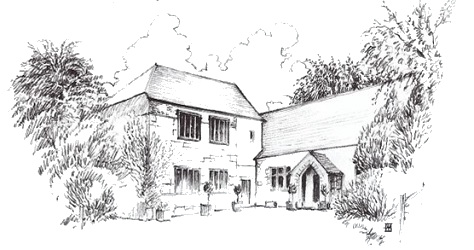
BERRYNARBOR MANOR HALL TRUST
Autumn has continued to go well in the Hall with several successful fundraisers for the hall and other groups, along with private functions.
The Fashion Night, hosted by Clathers, was another fun evening with a reduced, but nonetheless jolly, crowd of ladies encouraging the 'supermodels' on! A very respectable £700 was raised which will go towards the cost of a new water heater and water boiler for making large numbers of teas and coffees.
Congratulations to Helen and Josh who celebrated their Wedding in the Hall in September. It was the first big wedding in the hall since covid and the hall looked absolutely gorgeous - the couple and their family and friends transformed it with flowers and twinkly lights to create a beautiful village wedding. We look forward to welcoming our 2022 weddings.
We have received a generous donation from Barbera Eales in Alan's memory and we shall be putting the money towards our kitchen revamp, so a big thank you to Barbara.
Many thanks also go to Ben Ede who gave a generous donation when booking his family's recent celebration in the hall in memory of Peter and Jean Pell.
Our latest Beaford Arts collaboration had a well-attended hall toe tapping to the excellent Moscow Drug Club with a jazzy take on some old classics. Thanks go to Fenella for organising the show which made a very healthy profit of £180 for the hall. The Bristol band seemed to enjoy themselves so hopefully they will come back to Berrynarbor!


We have a new system for booking the Hall. This should be done in the first place by sending an e-mail giving full details of the required booking to: yvonnefrancis10@gmail.com.
December is a busy time, along with private bookings we have our Christmas Fayre on Sunday 5th December, Berry in Bloom Festive Quiz on Friday 10th December and Wreath Making on Saturday 11th December.
We wish you all a very happy and safe Christmas and New Year.
Julia
Fairchild - Chairman [882783]
Alan
Hamilton
- Treasurer [07905445072]
Bookings
- yvonnefrancis10@gmail.com
15

16

17
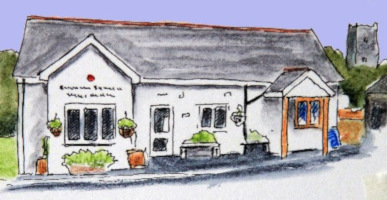
NEWS FROM OUR VILLAGE SHOP & POST OFFICE
There is a lot going on in the shop in the run up to Christmas. We are expecting to be busy, so make sure you have submitted your Christmas food and drink orders by Tuesday 21st December at the very latest. Order forms are available in the shop now.
We are again running our very popular December raffle with two wonderful prizes. The first prize is a fabulous Christmas hamper packed full of goodies and the second is a drinks combo - something to wash down those festive treats! The raffle will be drawn on Thursday, 23rd December.


Our Jon Thorner pies are very popular, mostly because they are delicious! The shop has to order them in advance on a Monday for a following Friday delivery. So if you don't want to be disappointed, please let us have your orders as early as possible.
Shop and Post Office Opening Hours
Christmas Day and Boxing Day both fall over the weekend, there will be two bank holidays the following Monday and Tuesday. The shop and Post Office opening times will therefore be follows:
- Friday 24th December - 08.30-12.30
- Saturday 25th December - Closed Christmas Day
- Sunday 26th December - Closed Boxing Day
- Monday 27th December - Closed Bank Holiday
- Tuesday 28th December - Closed Bank Holiday
- Wednesday 29th December - 08.30-13.00 14:00-16.30
- Thursday 30th December - 08.30-13.00 14:00-16.30
- Friday 31st December - 08.30-1300 14:00-16.30
- Saturday 1st January - Closed New Year's Day
- Sunday 2nd January - 09.00-12.00
Posting date deadlines
- UK Inland
- Saturday 18th December - 2nd class and 2nd class signed for
- Tuesday 21st December - 1st class and 1st class signed for
- HM Forces Mail - British Forces Post Office (BFPO)
- Monday 29th November - Operational HM Forces
- Monday 6th December - Static HM Forces
- International Standard and International Tracking and Signature Services
- Dates vary, see chart at Post Office. Advice: post as early as possible.
Our Karen, Award Finalist
Paul
Weston - Chairman
Berrynarbor Community Enterprise
18

19
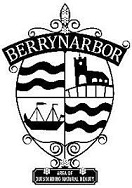
FROM THE PARISH COUNCIL
BERRYNARBOR PARISH COUNCIL
berrynarborparishcouncil.org.uk
Chairman: Adam Stanbury [01271] 882252
Councillors:
Gemma Bacon, Jenny Beer, Andy Burch,
Adrian Coppin, Bernadette Joyce, Jody Latham,
Nic Wright
Parish Clerk: clerk@berrynarborparishcouncil.org.uk.
County Councillor: Andrea Davis
District Councillor: Joe Tucker
Snow Warden: Adrian Coppin
Defibrillator Training
The Assistant Community Responder Officer North and East Devon from the South Western Ambulance Service will be running the annual defibrillator training session on 24th January 2021. The training will take place from 6.00 p.m. in the Manor Hall. Social distancing will be maintained throughout the session. Please contact Cllr. Jenny Beer for further details.
Festive Lights
The Parish Council has purchased further lights for this year's festivities, and would like to say thank you to our County Councillor. Andrea Davis and North Devon Councillor, Joe Tucker, for their funding towards the purchase of the lights. These are on order and it is hoped to take delivery and install them before December.
The next Parish Council meeting will be at the Manor Hall at 7.00 p.m. on Tuesday, 14th December. Villagers are welcome to attend.
Adam and all Councillors wish all villagers a Happy Christmas and a safe and peaceful New Year.
Vicki Woodhouse - Parish Clerk
20

BERRY IN BLOOM
Wendy Applegate
22


Artwork: Angela Bartlett
Wendy Applegate
23

BERRYNARBOR WINE CIRCLE
Alcohol
may not solve your problems, but
neither will water or milk.
Anonymous
Berrynarbor's Wine Circle, like numerous groups nationwide, ceased to convene for and from March 2020. Under normal circumstances, our season runs between October and May, but our lives, from this point on, were anything but normal. Thankfully, Wednesday, 20th October, this year, saw the restart of the Wine Circle and the start of our 2021-2022 season. We are hoping that we have resumed a current normality, and can look forward to completing this season!
Due to the months of absence caused by this deadly virus, the Committee were delighted to realise that 34 people had crossed the threshold; we knew it would have been more, but for illness, an essential family visit and an absence due to contact with a positive Covid 19 case. The Manor Hall is spacious and all members, able to participate, were seated with socially-distanced spacing. This will continue for as long as it is required.
Tony Summers, our Chairman, began with a concise but comprehensive AGM. Sadly, it was followed by a minute's silence for members to remember those we have lost: Alan Eales, Mary Hughes, Carol Lucas and Christine Pocock. His topic for the evening's tastings was a Return to Europe Wine Tour.
Our first white was a French Picpoul de Pinet, then an Austrian Sauvignon Blanc and a Spanish Verdejo. All these were young, 2020, but many of us thought that the Danaris, from Austria, was delicious and if held on the tongue it had a slight fizz. Their prices were £10.99, £8.99 and £8.99.
We followed these with the reds: a French 2018 Fleurie at £12.99. Our next was a 2018 Italian Toscana. This was a Tuscan mixed-grape recipe and £9.99. We finished with a 2019 Vinha do Fava Reserva, from the Setubal Peninsula of Portugal. Its special price was £12.59.
Laithwaites supplied all these wines for our pleasurable evening. It may have been a Return to Europe Wine Tour, but we had travelled safely, tasted some new and interesting wines, socialised with friends and neighbours and all without lateral or peak flow tests, paperwork or our passports!
Our next event will be hosted by Charlie Cotton. Charlie is the knowledgeable founder of Bray Valley Wines in South Molton. We are fortunate to have this supplier 'down the road'. He is an excellent speaker, a thoroughly nice chap and I know he'll be presenting some delicious alcohol! He used to supply to the trade only, but like many businesses, particularly since the pandemic, he supplies to anybody who wishes to visit. At his Pathfields premises, you will be greeted and treated to his expertise and able to sample items from his superb stock, which he tastes before purchase. He'll be with us on Wednesday, 17th November.
The Committee have discussed and agreed that it's wise to have our Christmas event, Wednesday, 8th December, in the Manor Hall. Sadly, this pandemic is still with us, although all of our members, I suspect, have received double or even treble vaccinations. At the Hall, we can be in charge of the social distancing, the cleansing and the timing. Once again, the tables will be laden with home-prepared produce washed down with a few well-chosen tipples!
Judith Adam - Promotional Co-ordinator
24

25

26
THE LUCKY FEW
We are the lucky few are we
To live in such a place
Where rolling hills and gentle folk
Gives life an easy pace
There's nothing more that we could need
'Cos we have got it all
Our shop, our school, our pub
Our fluid Manor Hall
Folk are wont to gather there
They truly are sharp skilled
Wiff waffers, spinners, artists
Where wine glasses are filled
There's badders and upholstery
With knit and natter too
Choice is in abundance
There's so much that we can do
Community is at our heart
We thank those who take the lead
And their teams of volunteers
They are a special breed
There's Wendy with her bloomers(!)
To the challenge they will rise
Until their hard work triumphs
And wins that golden prize
To our shop we should be thankful
They're open every day
Through snow and flood and pestilence
Whatever comes their way
Their team is led by Karen
You're welcomed with a smile
With help from Sue and Jackie
They'll go the extra mile




Illustrations by: Peter Rothwell
And proudly stands our village church
With a faithful band of ringers
Its bells call out on Sunday morn
The choir and all its singers
The Globe has had its issues
Food's good, as is the wine
But when will it be open?
Your guess is as good as mine
There's Judie and her journal
Bringing news from all around
We thank her for the pages filled
And the stories she has found
The children like to go and play
There's football and the swings
Climbing frames, different games
They have so many things
The weather can be 'changeable'
Sometimes it can't get wetter
But when the sun shines down on us
There's nowhere, nowhere better
The visitors turn up in scores
In summer it's so busy
Their driving down our narrow lanes
Can kinda make you dizzy
But we smile and say you're welcome
And they envy us our life
As they go home and back to drudge
To face their daily strife
We are the lucky few are we
To live in such a place
Where rolling hills and gentle folk
Give life a gentle pace
Anon. 2021
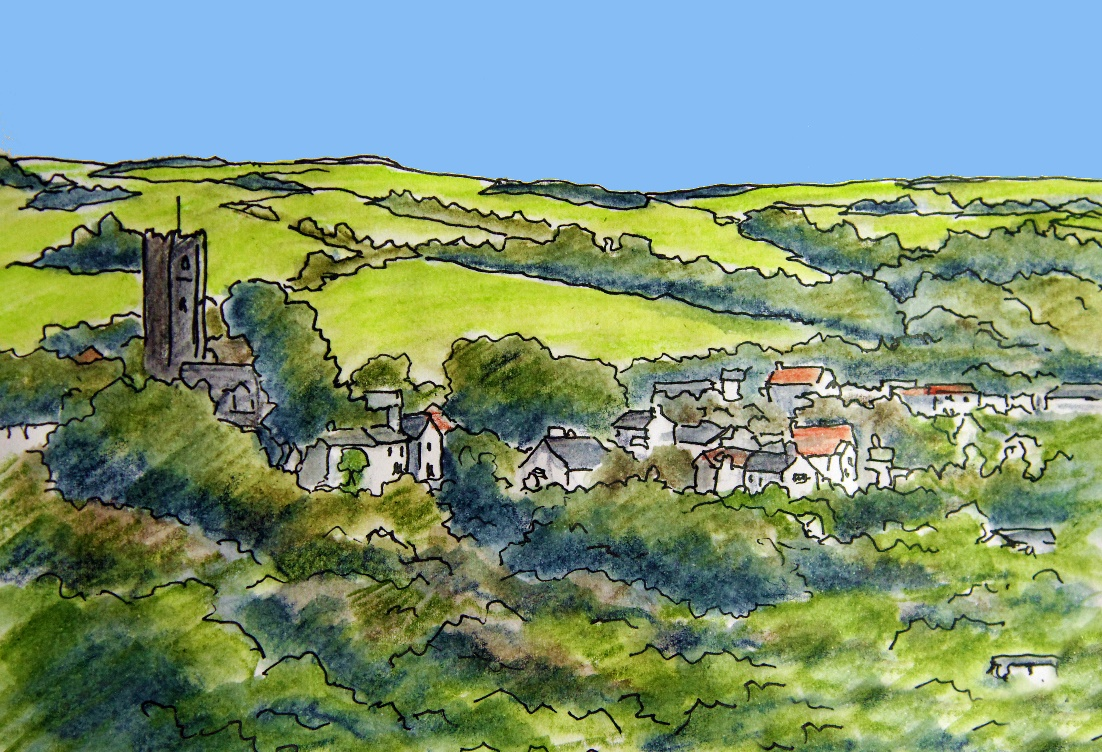
Illustration by: Paul Swailes
27
NATURE NOTES NO. 8
Return of the White-tailed Eagle
One of the most exciting happenings in my birdwatching life occurred in October 2020 on Lundy Island when a White-tailed Eagle flew almost over my head, no more than 30 feet up. It was one of those spine-tingling moments and an unforgettable experience. The two [large] Ravens in hot pursuit - one behind each wing - looked tiny by comparison!
Until that moment, the last known White-tailed Eagle on Lundy is documented as having been shot in about 1880, its stuffed and mounted remains now housed in Ilfracombe Museum. The species was formerly considered an occasional visitor to the island and is even believed to have nested on Lundy in the early part of the 19th century.

The British breeding population was hunted to extinction in the early 20th century, the last native individual shot in Shetland in 1918. A painstaking reintroduction programme, using birds of Scandinavian origin, began in Scotland in 1975, since when the population there has grown to some 150 pairs, centered on the west coast Highlands and Islands. On the continent, White-tailed Eagles nest around Scandinavian and Baltic coasts and in the wetlands of central and eastern Europe, some moving south-west in winter, occasionally reaching Britain. The European breeding range is expanding, and nesting is now regular in The Netherlands.
Recently, juvenile birds from the growing Scottish population have been released on the Isle of Wight. Now in its third year, the project has to date released 25 eagles, with most of these surviving and apparently doing well. Led by Forestry England and the Roy Dennis Wildlife Foundation, the project aims to re-establish White-tailed Eagle as a breeding species in England after a 240-year absence. In all, some 60 young eagles are due for release over five years, with breeding activity anticipated from 2024 onwards once the earliest released birds reach maturity at five or six years of age.
Each eagle is fitted with a satellite tracker to enable their progress to be monitored. So far, the released birds have travelled widely, journeying across Britain as they develop the skills that, hopefully, will see them live long and productive lives. One bird released in 2020 crossed the English Channel earlier this year and has since spent time in France, The Netherlands, Germany and Denmark before heading back across the Strait of Dover in November. Another spent a long period roaming Exmoor, coming very close to Berrynarbor at one point, and it must be only a matter of time before one is spotted soaring over the village!
In spite of their extensive wanderings, the youngsters consistently return to the Isle of Wight and the Solent, suggesting that they see the island and adjoining mainland as their home - an encouraging indicator for eventual successful breeding.
As the eagles extend their breeding range, it's easy to imagine a pair one day returning to nest on Lundy, and perhaps also along the North Devon coast where long-ago sightings of White-tailed Eagles are recorded in the annals of Devon's birds.
Lundy's first White-tailed Eagle [inset] for more than a century flew over the island on 16th October 2020.
The tracking map [reproduced with permission of the Roy Dennis Wildlife Foundation] shows that it flew out north of the island before returning to rest for a time near the north lighthouse, before returning to the North Devon mainland where it roosted in cliffside woodland. [photo: Dean Jones]
You can read more - including the answers to frequently asked questions about White-tailed Eagles - on the Roy Dennis Wildlife Foundation website at www.roydennis.org.
Tim Davis
28
BAILEY'S BLOG
They say that communication is key. Well, I have been developing my communication skills over the last few months. My bark has got deeper, my tail has got waggier and my facial expressions cuter... if that's even possible!
Some communication us dogs have no control over. My tail thumps in anticipation of something exciting. When Alfie the cat enters the room, I have no control over it, and when I see a squirrel in the garden or the Mrs. arriving home in her car, it happens then. Thump, thump, thump... in other words, "Yippee! Here comes fun!"
Apparently, words are important, but between you and me I don't rate them. "Sit." "Wait." "Bailey Come." Really? Most of the time I humour you; I know it makes you feel in control and very important. There is one word, though, that I truly despise. It's that word "off"! Horrible word. So offensive. Like you humans, I so hate it, when I am told to "Off!"
Too much talking is really not a good thing at all. The Mrs. takes me for a walk through the village and so much walking time is ruined while she chats to everyone. It can take her a whole ten minutes greeting someone; such a waste of time! A good sniff of each other is all that's really needed and then be on your way. I have been known to say hello to the odd human myself though, but that's usually by jumping up. It doesn't always go down that well, especially if my paws are a bit muddy. That's when I hear that "off" word. It's not easy when someone is in a car either. I try to jump up to say hi, but the Mrs. pulls me away from the car and starts freaking about the paintwork. Doesn't she realise that my signature is now famous since I started writing these blogs? Postman Neil certainly does; he goes for weeks without cleaning that van because my prints are all over it.
Let me, let you into a doggy secret. Words can be so unnecessary. We canines communicate all the time without even opening our mouths! You could learn so much from us and stop wasting all that hot air. Here are just a few tips . . .
If
you want something, try lifting your paw. People fall for it all the time.
Sit proudly and show your paw and the treats come rolling in! I let people
know I love them and that I am thrilled to see them by wiggling my bottom.
Everyone loves it; it makes everyone smile and raise their voice excitedly
too. The more I do it, the more animated they get! Try it and see for yourself.
If I want something really, really badly, I just sit and stare. You do it
long enough and people just give in. A head on the lap and a sorrowful look
always wins them over. I do it to the Mr. when he is sitting on the sofa.
Works every time! It even works on the bed now. He knows the Mrs. gets
annoyed, but he lets me on anyway. He pretends to be all fierce and
pack-leaderish, but one persistent stare from me and he is putty in my paws!
So my advice this month is don't waste your time on lots of words.
There are far too many other things to be enjoying at Christmas time. It's a
very special time of the year, so start thumping that tail, shake your bottoms
from side to side to show your excitement, and get ready to lift your paws for
lots and lots of treats.
Happy Christmas Everyone!

29
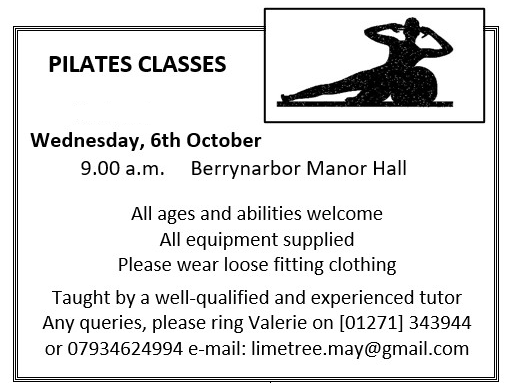
30
A SUMMER HOLIDAY
Cast your mind back to June 2019 PC [that is Pre Covid] if you can remember that far! We were looking for our next summer holiday in a Great Rail Journeys brochure, our eyes were caught by The Waterways of Alsace and Lorraine. This started with a rail journey from London to Strasbourg where we had a night tour of the city and a night in a hotel. We would then join a canal-barge-hotel, The Madeleine, for seven days with only 20 other passengers. There was a full-time guide, all food and drinks were included. We would cruise down the Marne-Rhine canal for six days with a daily excursion to a town, or visitor attraction each day. The highlight was the Arzviller Inclined plane, where a whole section of the canal dropped down a 41% incline that replaced 4km of locks that used to take a whole day to traverse. There was then a visit to a crystal works and after visits to Savern and Lagarde, we would return by bus to Strasburg for a further night in a hotel before the return by train to Paris, then London.
Although it looked a bit energetic for people of our age, the idea was very attractive and we booked for May 15th 2020. We then needed travel insurance, expensive at our age, and to pay the balance of the cost in March.
Then there was covid! Someone started playing with traffic-lights and continental travel was almost impossible.
In April 2020 we were informed that our trip had been cancelled. We were offered, among other things, the same trip at the same price in 2021. We initially agreed, although the date was not May, but when it was confirmed, it was 3rd September 2021 and we were less certain that we still had the energy to cope with the excursions! However, we knew that if we cancelled we should lose all our money, so we held on. Several times during that summer we phoned Great Rail to see if the holiday was on or cancelled.
However, someone was still playing with the traffic lights and Great Rail could not tell us whether the trip was on or off. Eventually, 10 days before our departure date we were told the trip was on. Departure was from St. Pancras at 6.30 a.m., returning ten days later at 6.30 p.m. We were also told that if we did not go, we would lose all our payment which was over £4000 in total.
We said that we would go, and then we started to think. We were two years older than when we made the booking. Would we still be up to the excursions?
Then we would need more travel insurance as the first lot had expired and spend a night in London before the trip, and probably another night before we could get back to Berrynarbor, so there would be the fares to London and back to pay for. Then we would have to have covid tests when we got home which were at a rip-off price of £100 each at that time. The total new cost would be getting on for £1000!
We phoned customer service at Great Rail and told them regretfully that we would cancel the trip. The girl there was apologetic. She was sorry that we would lose everything we had paid so far, and she did not think that was very fair. She would see if there was anything she could do.
To our delight and astonishment, she rang back in a couple of hours to say that all our booking fees would be returned to us, and then, because we had taken out the insurance only a few days before, we were able to recover that fee as well!
A Staycation
If you can't go abroad, what do you do? You have a Staycation! We decided that we would have a week free of most chores and at least one meal a day out, and do a few things that we had not done before.
On Friday - We went to Endsleigh House Hotel where we were to meet my two daughters for lunch. Endsleigh, near Milton Damerel, was originally built by the Duke of Bedford as a hunting lodge, and is now one of three top range hotels in the Politzi group. It is famous for its extensive, beautiful gardens. Joanna, who lives at Chudleigh Knighton, was to drive to Bere Alston to collect Hilary and bring her to Endsleigh. Unfortunately, a motor-home overturned and caught fire near Okehampton. Joanna was stuck in a queue for 2 hours and had to go home. Luckily, Hilary was able to drive herself, so we had an excellent lunch. The weather was good and we were able to have a walk in the gardens with Hilary's young Labrador.
 On Saturday - It was
fortunately good weather, so after a walk round Wistlandpound, we joined Janet
and David for an excellent lunch at the Fox and Goose in Paracombe.
On Saturday - It was
fortunately good weather, so after a walk round Wistlandpound, we joined Janet
and David for an excellent lunch at the Fox and Goose in Paracombe.
On Sunday - We often have a snack lunch in the Imperial Hotel in Barnstaple, and we wondered what it would be like to have a formal dinner there, followed by a night in one of their best rooms. When we enquired, they offered us an ordinary room that looked over the car park. So we stuck to our request for a Prime room at the front of the hotel looking over the river and the leisure centre. We were told this room had everything - there was a box of chocolates, a small bottle of Prosecco, fruit, dressing gowns, slippers etc. It was very comfortable. When we went down for dinner, we were a bit concerned by the possible dress code, but we saw other diners in shorts, so we need not have worried! The meal was very good. The one snag was that the front of the hotel was flood lit with a big orange light that shone through curtains, which was not turned off until dawn!
On Monday: - Direct from a good breakfast at the Imperial, we drove to South Molton to the Quince Honey Farm. This had been started by George Wallace with two hives when he left the army in 1948. By the 1970's George's two sons were involved; they had about 700 hives and had moved the business into the old workhouse on the edge of the town. There they made other honey products, like soaps and cosmetics. It was necessary for them to grow again and they were able to buy a 54-acre site at Aller Cross, beside the Link Road. Here they have made a Honey Garden where plants are not necessarily pretty, but very attractive to bees. There is a factory building where the honey is packed, and a demonstration room, where protected from bees, visitors are shown the workings of a hive. There is also a big restaurant, an exhibition and a shop, so although we were there by about 10 o'clock, we were occupied until well after lunch.

On Tuesday - We explored Hartland, and then went to the hotel on Hartland Quay for lunch. I was discomfited because as I enjoyed my prawn sandwich, a fellow customer was told that "There were no prawns"!
On Wednesday - We went to the Dinosaur Park - a big mistake! It was expensive, grubby, the animals were poorly housed and the catering was a disaster! We made up for it by having an excellent evening meal at the Italian Restaurant in Ilfracombe.
On Thursday: - We went to Compton Castle, a National Trust Property near Torquay. Originally built by the Compton family, the marriage of Joan de Compton to Geoffrey Gilbert, in 1329, brought the two families together, and the Gilberts have been adding, altering and renovating the castle ever since. Built as a manor house, it was fortified about 1530 because of the threat from the French who had attacked Plymouth in the 14th century. The owner at that time was Sir Humphrey Gilbert who was a half-brother to Sir Walter Raleigh. Gilbert played a large part in colonising Newfoundland. The castle was sold in 1750 and fell into disrepair. The current scion of the family, Commander Walter Raleigh-Gilbert, bought back the ruins of the castle and restored it before donating it to the National Trust.
After the visit we found an excellent country restaurant at Stoneycombe, where we had a good lunch. On our way home we passed Joanna's house, and because we had not met at Endsleigh House, we were able to call in with a cream tea to enjoy with her.
The moral of this story, if you need one, is that if you cannot get your expensive foreign holiday there are plenty of interesting things to do within easy reach of your front door!
Alex Parke
31
CROSSWORD ANSWERS
ACROSS
1. Spade, 4. Speed, 10. Lundy, 11. Elevate, 12. Catering, 13. Used, 15. Indian, 17. Mildew, 19. Neat, 20. Crossbow, 23. Element, 24. Issue, 25. Asked, 26. Akela.DOWN
2. Pinot, 3. Daydream, 5. Peer, 6. Elapsed, 7. Electioneer, 8. Being, 9. Meadowsweet, 14. Dipstick, 16. Diadems, 18. Truth, 21. Basil, 22. Cede.32

RURAL REFLECTIONS -102
Britain has two breeds of sheep that can be regarded as truly primitive, one found in the far north of the British Isles and the other by the south coast. Both are still in existence as a result of being on land surrounded by water, the North Atlantic and the English Channel respectively And, whilst one area of land is due to the creation of a natural phenomenon, the other is a result of a manmade structure built, ironically, without the sheep's survival in mind. These two primitive breeds came to Britain by different routes, the northern short-tailed from central Asia via Scandinavia and Russia, whilst the long-tailed Celtic is believed to have come from the Near East before travelling through the Mediterranean countries.
 The
long-tailed Celtic breed, whose sheep are tanned faced and horned, reach as far
back as the Iron Age. Its forbears once grazed across the heaths and downs of
the southeast as well as the countryside of south western England. Sadly,
crossbreeding down the centuries led to the breed disappearing from mainland
Britain. It was to their fortune, however, that the natural formation of a
shoal, in this case a shingle bar that rolled landwards, would guarantee this
ancient breed's immunity from surrounding influences. The shingle bar I refer
to is Chesil Beach, with the breed becoming more commonly known as Portland
Sheep.
The
long-tailed Celtic breed, whose sheep are tanned faced and horned, reach as far
back as the Iron Age. Its forbears once grazed across the heaths and downs of
the southeast as well as the countryside of south western England. Sadly,
crossbreeding down the centuries led to the breed disappearing from mainland
Britain. It was to their fortune, however, that the natural formation of a
shoal, in this case a shingle bar that rolled landwards, would guarantee this
ancient breed's immunity from surrounding influences. The shingle bar I refer
to is Chesil Beach, with the breed becoming more commonly known as Portland
Sheep.
Portland
has been a royal manor since before the Norman Conquest and a considerable
sheep run for much longer, factors that made the breed unique and famous throughout the kingdom for centuries. Able to
live on the island's sparse pasture, the
breed has a strong constitution that gives
it a strong resistance to disease and
parasites. This is a proud and independent
breed with a keen sense of its
own identity. The sheep demand respect and
are not easily intimidated, resulting in
a blase attitude towards sheepdogs. One other key characteristic of the breed
is its ability to lamb out of season, although unfortunately they barely
average one lamb per ewe.
During the nineteenth century, its pastural ground
was gradually eroded by commercial quarrying, leading to the breed eventually
disappearing from the island when the last flock was sold in 1913 at Dorchester
Market. By 1953 only a few flocks remained in Britain, with Calke Abbey
having the largest.
Even these sheep, however,
are no longer considered pure as over the years they have received
infusions of blood from other breeds, notably the Exmoor Horn.
Today, the breed's nearest descendants are the Dorset and Wiltshire
Horns.
However, in 1793 the crofters were warned by Sir John Sinclair, the first President of the Board of Agriculture, of their change of emphasis towards profit making. In his view they were no longer concerned for agriculture despite it being 'in every county the first and foremost of the arts'. Furthermore, he cautioned that if ever the manufacture of kelp should fail, it would 'bring certain ruin upon the tenants and their families'. He was to be proved right. By 1832 the price of kelp had collapsed, leaving the islanders facing destitution and at risk of famine. As a result, Traill's grandson, then laird, and his agent came up with a radical plan. Rather than encouraging the inhabitants to emigrate to larger, less populated islands, they proposed the building of a dry-stone dyke,12 miles in length, which would run the island's whole perimeter. It would also be tall enough to exceed any high tide and keep the sheep away from the island's cultivatable land. Only ewes were to be allowed in the fields at certain times of year, between lambing in mid-April and weaning in late July or early August. Other than at these times the breed has, ever since, been confined to the foreshore.


Illustrations by: Paul Swailes
They have, as a consequence, become an unusual breed. Whereas normal sheep eat by day, these flocks will also eat at night for they have had to adapt to a diet of mainly seaweed which means eating according to the tide times. As a result, they have developed an instinct which enables them to know the state of the tide with their inbuilt alarm system enabling them to rise to their feet just as the tide is about to ebb. In haste, every flock will follow the retreating sea, with each beast competing to munch on the cleanest blades. Some are even willing to swim into the ebbing water to be the first to reach the best pickings. Due to this dietary dependence on seaweed, they are unable to eat too much grass as its copper would poison them. This breed is also uniquely not entirely vegetarian, being able to digest the feet and legs of dead seabirds.
The breed's coat is naturally impregnated with lanolin which repels the weather and so protects the sheep. Shearing by machine would leave their skin too bare to withdraw salt water so this has to be done by hand, the shears leaving just over an inch of wool across the skin. As mentioned at the end of my last article, tradition dictates that shearing is done on the first new moon closest to the end of July or beginning of August.
One other peculiarity to the breed is something that would bring nightmares to modern farmers striving for standardisation. For these sheep will run together on the shore, preventing individual owners from selecting specific rams for breeding with their ewes. This 'breeding-free-for-all' has led to a remarkable range of wool colour, including chocolate brown, steel grey, black, white and cream. It is an individuality in the breed that the crofters take pride in and is something they do not plan to alter. And to be honest, I don't blame them.
Have
a safe and peaceful Christmas.
Steve McCarthy
33
We reached the top of the Torrs
on a grey and windy day
the sea near black the sky clouded
dark over Ilfracombe
We looked west to Lundy
and the sky cracked open
a pale line of light
lightening the sea in patches
And as we watched
the line of light thickened
and brightened
And as we watched
second by second
the colour of the sea mutated
gradually
near black to thick dark blue to
clear green blue
We looked up
and the strip of light was wide and shiny
bright above a line of clouds and
the sun was warm and
the wind subsided
We turned
and saw Ilfracombe bathed
in golden sunlight
Virginia Evans - Lee Copse

Illustrated by: Paul Swailes
34
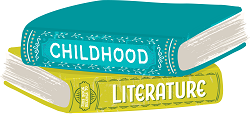
CHILDHOOD LITERATURE
"God bless Aunt Miranda! God bless the brick house that was! God bless the brick house that is to be!" These words exclaimed by Rebecca conclude the classic American 1903 children's novel, Rebecca of Sunnybrook Farm, written by Kate Douglas Wiggin.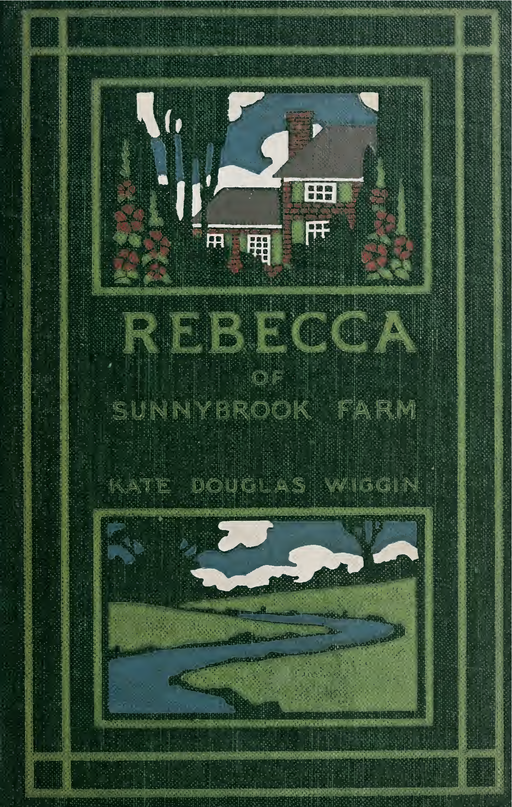
Cover from 1903
Kate Douglas Wiggin
Public domain, via Wikimedia Commons
Kate Douglas Smith Wiggin was born in Philadelphia on the 28th September 1856, the daughter of a lawyer of Welsh descent, Robert Smith. She had a happy childhood although her father died when she and her sister, Nora, were only small. Following her husband's death, their mother moved the family to Portland, Maine and then three years later, on her remarriage to Albion Bradbury, to the village of Hollis in Maine.
When Kate was 11, Charles Dickens was reading on tour in the States, but Kate was thought to be too young to warrant an expensive ticket to hear him. However, on the following day she found herself on the same train as Dickens and apparently engaged him in a lively conversation for the course of the journey! This experience is detailed in a memoir, A Child's Journey with Dickens [1912].
Kate's education was somewhat irregular, including home instruction from her step-father, and graduating from the Abbot Academy in Andover, Massachusetts, in 1873. Although casual, hers was more education than most girls received at that time.
In the same year, hoping to ease Albion's health, he suffered from lung disease, the family moved to Santa Barbara, California, where he died just three years later.
A kindergarten training class opened in Los Angeles and Kate enrolled. Graduating in 1878, she became head of the first free kindergarten in California, in the slums of Silver Street, San Francisco. The children were, to quote, children of the wildest type, but Kate's loving personality and flair won them over and by 1880 she was forming a teacher training school at the Silver Street Kindergarten.
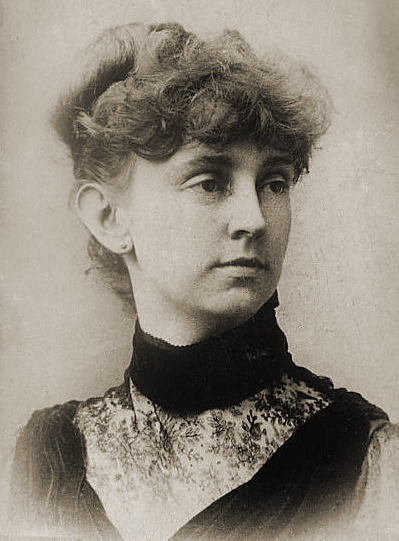
Kate Douglas Wiggin
Bain Collection, Public domain
via Wikimedia Commons
In 1881 Kate married Samuel Bradley Wiggin, a San Francisco lawyer, but as was customary at the time, it was necessary for her to resign from her job. However, devoted to her school, she began to raise money for it by writing stories - the first The Story of Patsy [1883] was followed by more with enormous success.
The couple had no children and in 1888 they moved to New York City. Bradley died suddenly a year later and Kate relocated to Maine. It is believed that for the rest of her life she grieved, but consoled herself by travelling frequently and extensively, dividing her time between writing and public reading for the benefit of various children's charities.
Making three trips to the UK in three years, 1892, 1893 and 1894, records from the Ellis Island docking logs show that at first, although a widow, she described herself 'wife', but in 1894 as 'authoress'.
On her way to England in 1894, Kate met George Christopher Riggs, a linen importer, and it is said that having got on so well, they had agreed to marry before docking in Liverpool. They married in New York on the 30th March 1895.
Kate continued to write many and varied books under the name of Wiggin, writing the immediate best-seller classic children's novel Rebecca of Sunnybrook Farm in 1903, followed by another best-seller, Rose o' the River in 1905.
Kate was a popular hostess in New York and in Upper Largo, Scotland, where she had a summer home, and where for many years she organised plays.
During the spring and summer of 1923, whilst in England as a New York delegate to the Dickens Fellowship, Kate became ill with bronchial pneumonia, dying in Harrow, Middlesex, on the 24th August. At her request, her ashes were taken back to Maine and scattered over the Saco River.
Wiggin was also a songwriter and composer, writing some of the lyrics, music and arrangements, composing all the music for Nine Love Songs and a Carol [1896].
Many of her novels were made into films, the most famous one being the 1938 film of Rebecca of Sunnybrook Farm starring Shirley Temple.
Judie Weedon
35

NEWS FROM BERRYNARBOR PRE-SCHOOL
We have had a busy and exciting start to our term so far and have appreciated the atmosphere in the newly painted and decorated Pre-school room.
We held our AGM in October and elected a new Committee, which has enabled the Pre-school to continue to operate.
Topic of learning - This term we got to know the children and the children got to know us.
Our All About Me topic encouraged the children to share information and knowledge about themselves, such as what they like and dislike. We created a life-size collage picture of each child which gave them a sense of belonging and recognition. They looked into mirrors to see their own facial features and expressions. We discussed similarities and differences compared to other children.
As the season changed, we explored our environment, collecting autumn leaves, sticks, pine cones and seeds. The children created hedgehog pictures using leaves, made leaf rubbing pictures and built houses from straw, leaves, sticks, bricks. Inside large boxes were played with making dens for themselves as well as homes for animals to hibernate in.
The children enjoyed many stories to support their learning such as Owl Babies, Stick Man, The Gruffalo, Nutty Nut Race and many more. The Owl Babies story was chosen to share with parents in our new Communication Corner Garden. The children planted bulbs and flowers in the new planter. We wait to see what colour the flowers will be in the spring!
Clothes Recycling - We thank everyone who donated unwanted clothes in our Bag2School fundraising event. We are pleased to say we raised £54.00 this time and hope to organise another event in the spring.
Fundraising - Christmas Raffle - Raffle tickets are now on sale for our Christmas Raffle. We have some amazing prizes which have been donated by local businesses and we thank them all for their kind contributions. Let's hope we can meet our target of £1000 which will be put toward the children's learning resources and replacing the Pre-school carpet.
That just leaves us to say we hope you all have a Merry Christmas and Happy New Year!
Best wishes from all at Pre-school
36
MOVERS AND SHAKERS - NO. 96
FRANZ XAVIER GRUBER and JOSEPH FRANCISCUS MOHR
Combined their talents to give the world Stille Nacht [Silent Night]
.jpg)
Franz Xavier Gruber
[25/11/1787 - 07/06/1863]
Primary schoolteacher, church organist and composer
Sebastian Stief, Public domain, via Wikimedia Commons
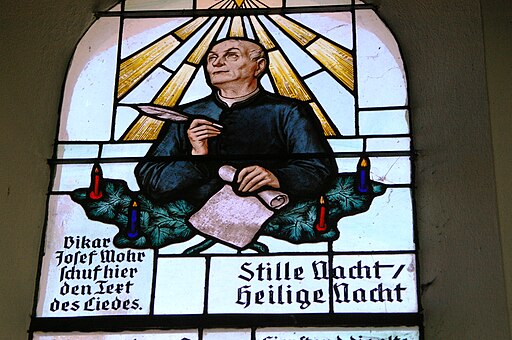
Joseph Franciscus Mohr
[11/11/1792 - 10/12/1848]
Priest and writer
Werner100359, CC BY 3.0
via Wikimedia Commons
For as long as I can remember, Silent Night has always stood out as my favourite Christmas Carol, and as I grew older, sung in German, it was even more beautiful.
As a wartime small child, on Christmas Eve I tried desperately to keep awake until the Salvation Army came to our street, and once they sang this carol, I could fall asleep, even forgetting the puzzle of how Father Christmas could possibly get down the bedroom's small chimney, particularly as on that special night, a fire was always lit!
Nearly eighty years later, I've discovered that it was compiled by two Austrian Catholics, one a teacher and the other a priest.
Franz Gruber was the fifth of six children born to Josef and Maria Gruber, linen weavers, in the village of Hochburg, Upper Austria. He was expected to learn his father's trade, but early on had set his heart on music. The local schoolteacher, Andreas Peterlechner, recognised his talents and gave him music lessons. Franz worked as a weaver until his 18th birthday, when his father allowed him to train to become a schoolteacher. This often included becoming church organist. Towards this, he completed his music education with Georg Hartdobler, church organist of Burghausen.
In 1807 he was appointed teacher in Arnsdorf and also took on the role of caretaker and organist at the local church.
Joseph [sometimes spelt Josef] Mohr was born in Salzburg on the 11th December to an unmarried embroiderer, Anna Schoiberin, and Franz Mohr, a mercenary soldier and deserter who abandoned the mother before Josef's birth.
Although Anna could use the father's name for her child, children born out of wedlock were stigmatized from birth. He grew up with his mother, grandmother and step-sister in a cold, damp house, such miserable accommodation not helping his health. His intelligence and talents however, became apparent to Johann Hiernle, vicar and leader of music at Salzburg Cathedral, who helped Joseph's education and encouraged him in music.
As a boy he was both singer and violinist in the choirs of the University Church and a local Benedictine Monastery. From 1808 to 1810 he studied at a Benedictine Monastery in Upper Austria and then returned to Salzburg Lyceum. In 1811 he entered the seminary, needing special permission as he was illegitimate. Three years later he was ordained as a priest - again with special permission as at the age of only 23 he was two years younger than the required age of 25.
So how did these two talented folk meet? Well, in 1816, whilst serving as an assistant priest, Mohr wrote a poem: Stille Nacht. Poor health then made him return to Salzburg, but after a short recuperation, he began serving as an assistant priest at St Nicholas Church in Oberndorf. There he got to know Franz Gruber, the schoolteacher in neighbouring Arnsdorf.
On a cold Christmas Eve in 1818, Mohr walked the three kilometres from his home to visit Gruber in his village. There he showed Gruber his poem, saying he needed a carol for that evening's Midnight Mass. Could his friend set this to music?
The church organ had broken down, so Gruber composed the melody with a guitar arrangement. A few hours later, the two men sang Stille Nacht at Midnight Mass, with Joseph Mohr playing the guitar and the choir repeating the last two lines of each of the six verses.
Over the years, many legends have sprung up over the origins of Silent Night, but the most likely explanation is simply that Mohr wanted an original song that he could play on his favourite instrument, the guitar. Within a few years, this carol appeared in churches around Salzburg and folk singers took it on tours around Europe. It was once sung before an audience that included Emperor Franz Joseph 1 of Austria [also King of Hungary, Croatia and Bohemia!] and Tsar Alexander 1. By 1839 it had reached New York.
In spite of Gruber claiming that he'd written the melody, even into the 20th Century, many thought the melody had been written by Haydn, Mozart or Beethoven! Gruber was finally proved right in 2016 when a long-lost version of Stille Nacht was authenticated as being in Mohr's writing and in the corner he had written 'Melodie von Fr Xav Gruber'. Later, Gruber composed arrangements of the carol for organ and orchestra, and then added scores for other carols and masses, many of which are still sung in Austrian churches.
Joseph stayed in Oberndorf only until 1819. He then moved from place to place. A generous man, he gave most of his salary to charity. By 1837 he was in the alpine village of Wagrain, where he set up a fund to help the children of poor families get an education, and another fund to care for the elderly. He died of a respiratory disease on 4th December 1848 at only 55 years of age, and is buried in Wagrain, now a ski resort. His memorial, just a few yards from his grave, is the Joseph Mohr School, paid for by the local townsfolk.
In 1808, a year after Franz Gruber became schoolteacher in Arnsford, he married a widow, Maria Engelsberger. They had two children, both of whom died young. Maria died in 1825 and Gruber married a former student, Maria Beitfuss. They had ten children, four of whom survived into adulthood. Maria died in childbirth in 1841 and so did her eleventh child, by which time they had moved to Hallein where Gruber was made choir director and organist. A year later he married Katherine Wimmer, the widow of a master shoemaker, and friend of Maria. Franz died of natural causes on 7th June 1863 at the age of 76 and is buried in Hallein, the site of the Franz Xaver Gruber Museum. Every December his grave is decorated with a Christmas tree.
And so, this famous and beautiful Christmas Carol was written by a humble curate, the melody added by an unknown musician, with a very modest premiere and yet it is now sung by millions of people, in hundreds of languages and anywhere from small chapels to great cathedrals. At one time it was classed as a Tyrolean Folk Song.
Now Austria regards Stille Nacht as a national treasure, and traditionally it may not be played publicly before Christmas Eve.
What a legacy from Franz Gruber, a village schoolteacher and Joseph Mohr, a modest priest.
Happy Christmas, everyone, and enjoy the carols, particularly Silent Night!
PP of DC
37




38
CHRISTMAS 2021
Enjoying old traditions, snubbing fancy new trends.
Christmas cards on the mantelpiece, no e-cards for me.
Nativity on the window-sill and carols around the tree.
Forget rubbish TV, films on repeat
Traditional games, time together with lots of special treats.
Christmas is a time, when we appreciate what's gone before.
Family traditions, who could want for more?
It's the simple things that make this time a truly special one.
Time altogether having good old family fun.
But if you're feeling low, or on your own for any particular reason.
Reach out and talk to someone during, what maybe, a particularly challenging season.
Don't sit alone at home, there may be others that feel the same.
Make your feelings known, together let's ease the pain.
Here's to a special Christmas for all,
enjoying whatever you like to do
A warm and happy celebration is what I wish for you.
Pam Robinson

Illustrated by: Paul Swailes
39
AT-A-GLANCE DIARY
| DECEMBER | |
| 5th | Manor Hall: Christmas Fayre, 2.00 - 5.00 p.m. |
|---|---|
| 8th | Wine Circle: Christmas Event, Manor Hall, 8.00 p.m. |
| 10th | Berry in Bloom: Christmas Fun Quiz, Manor Hall, 6.45 for 7.15 p.m. |
| 11th | Wreath Making, Manor Hall, 2.00 p.m. Manor Hall |
| 14th | Parish Council Meeting, Manor Hall, 7.00 p.m. |
| 17th | Primary School: End of Autumn Term |
| 19th | St. Peter's Church: Christmas Service, Lessons and Carols, 11.00 a.m. |
| 21st | Ilfracombe Academy: End of Autumn Term |
| 24th | St. Peter's Church: Service with Holy Communion, 9.30 p.m. |
| 25th | Christmas Day St. Peter's Church: No Service |
| 26th | Boxing Day St. Peter's Church: No Service |
| 27th | Bank Holiday |
| 28th | Bank Holiday |
| 31st | New Year's Eve |
| JANUARY 2022 | |
| 1st | New Year's Day |
| 3rd | Bank Holiday |
| 4th | Ilfracombe Academy & Primary School: Start of Spring Term |
| 11th | Mobile Library in Village from 11.55 a.m. Parish Council Meeting, Manor Hall, 7.00 p.m. |
| 19th | Wine Circle, Manor Hall, 8.00 p.m. Call My Wine Bluff |
| Manor Hall Diary | |
| Mondays | Upholstery, 9.00 to 1.00 p.m.Craft Group, 1.45 p.m. Badminton, 7.30 p.m. |
|---|---|
| Tuesdays | N.D. Spinners [2nd & 4th] 1st and 3rd: Craft Art Group, 9.30 a.m. |
| Wednesdays | Pilates Body Workout, 9.00 a.m. |
| Thursdays | Watercolour Painting 10.00 a.m. [10 week
terms] Pilates, 7.00 to 8.00 p.m. |
| Fridays | |
| Penn Curzon Room | Pre-School: Daily - Term time only Morning Session: 8.30/9.00 - 12.00 p.m. Afternoon Session: 12.00 to 3.00/3.30 or 4.00 p.m. All Day: 8.30/9.00 a.m. to 3.00/3.30/4.00 p.m. |
| Mobile Library | |
| Village Shop: 11.40-12.10 p.m. Sterridge Valley: 12.25-12.55 p.m. | |
School, Pre-School and Toddler Group - Term Time only
40
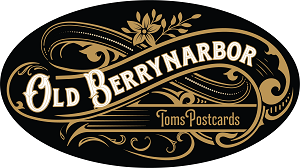
OLD BERRYNARBOR - VIEW NO. 194.
The Village Berrynarbor

©Copyright The Francis Frith Collection
This photographic postcard was published by Francis Frith and numbered BYR.42 was posted from BERRYNARBOR on Wednesday 9th September 1964. It was addressed to a Mr. & Mrs. E. Oliver living in Guernsey, Channel Islands. The picture shows Bessemer Thatch with a tiled roof, as the original thatched roof burnt down on the 5th May,1937. My original article about the fire was given in Newsletter No. 66, way back in June 2000.
The following morning, an article appeared in the Western Morning Newspaper:
"Two Brigades Fight Fire - Berrynarbor Hill House Destroyed - Outbreak starts in thatch".

Known to thousands of visitors the picturesque Bessemer Thatch House was destroyed by fire last evening. The damage is estimated at nearly £1,000.. The lower portion of the house, with its modern interior, is owned by Canon Jolly of the Deanery, Southampton. Every summer he visits the place and has done so for a great number of years, At the time he was not in residence, but the news of its destruction was conveyed to his wife, who told the Canon, who, it is understood, had left hospital only yesterday after an operation. The higher portion of the Thatch is owned and occupied by Miss L. C. Veale, head mistress of the Berrynarbor Council School. She was home at the time."
Summarised, the article tells us that a spark from a nearby chimney caught the thatched roof on fire shortly after five o'clock. The first to notice it was Mrs. D.Toms who lived almost opposite at Dormer Cottage. She at once sent for the Ilfracombe Fire Brigade.
Bessemer Thatch was originally three separate cottages, Nos. 47, 48 and 49 the village, with Little Gables, No. 50, on the corner.
Following the fire, Canon Jolly became the sole owner and arranged for the rebuilding of Bessemer Thatch, alas without thatch! He remained as the sole owner/occupier right up until his death in 1972.
Dormer Cottage is also shown in this postcard with young children playing in front.
The writing on the back of the card ends: Wouldn't like to farm in Devon. Children well a bit hectic as you can imagine. Love P & J.
This second upright card shows a young lad striking a broken tin as a drum and states: "A Right Merry Christmas to You". This very early postcard, published by Raphael Tuck and Sons, was posted on 25th December 1904 when only the address was allowed to be written on the back!
Tom Bartlett
Tower Cottage, November 2021
e-mail: tomandinge40@gmail.com
41
